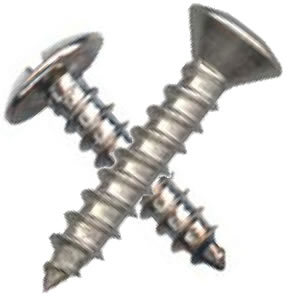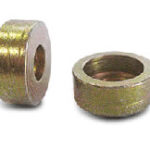Sheet metal screws offer a reliable fastening solution for sheet metal panels. Like all screws, they feature a pointed tip and threaded shank. Sheet metal screws, however, typically have finer and deeper threads than those found on other types of screws. Along with a sharp tip, these threads allow them to cut into sheet metal panels.
Because they are designed for use with sheet metal panels, sheet metal screws must be strong and durable. Screws made of soft or weak materials won’t cut it. You can find sheet metal screws in a variety of strong materials, including the following.
Stainless Steel
The most common material in which sheet metal screws are made is stainless steel. Stainless steel is an iron alloy with a minimum chromium content of 10.5%. It’s known as “stainless steel” because it’s resistant to rust and corrosion, which can lead to staining. When exposed to oxygen, the chromium in stainless steel forms a protective barrier that keeps the underlying iron safe from oxidation.
High-Carbon Steel
Some sheet metal screws are made of high-carbon steel. All types of steel contain carbon. High-carbon steel, however, has a higher concentration of carbon than its counterpart. Stainless steel, for instance, typically has about 0.03% to 0.1% carbon, whereas high-carbon steel has more than 0.6% carbon. With its high carbon content, sheet metal screws made of this material are very strong and durable.
Galvanized Steel
In addition to stainless steel and high-carbon steel, galvanized steel is used to make sheet metal screws. Galvanized steel is characterized by the presence of a protective layer, such as zinc. Raw steel is bathed in molten zinc. As the zinc adheres to its steel, it helps to protect the steel from rust and corrosion — all while enhancing the steel’s aesthetics. Galvanized steel sheet metal screws offer excellent corrosion resistance, making them a popular choice for humid environments.
Brass
There are also brass sheet metal screws. They aren’t as common as steel sheet metal screws, but they offer a unique appearance that many people prefer for visible fastening applications. Brass has a naturally rustic appearance that stands out from other common screw materials. The downside to brass, though, is that it lacks the strength of steel.
In Conclusion
The material of a sheet metal screw plays a critical role in how well it performs and how long it lasts. Stainless steel offers excellent resistance to rust. High-carbon steel provides superior strength. Galvanized steel delivers added protection in harsh conditions. Brass gives a distinctive look for specialty applications.


























